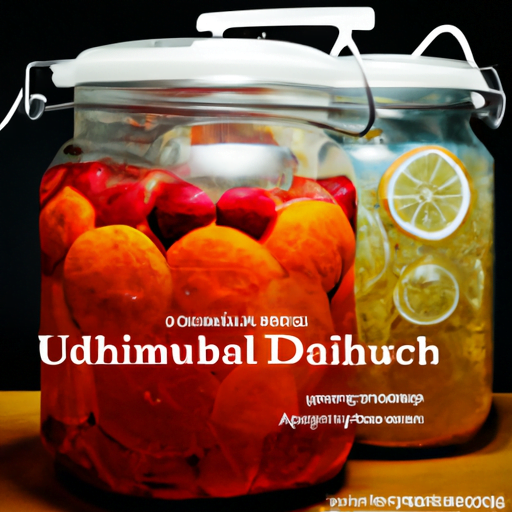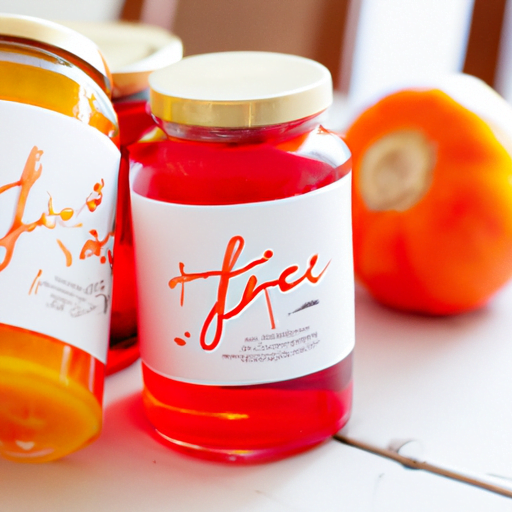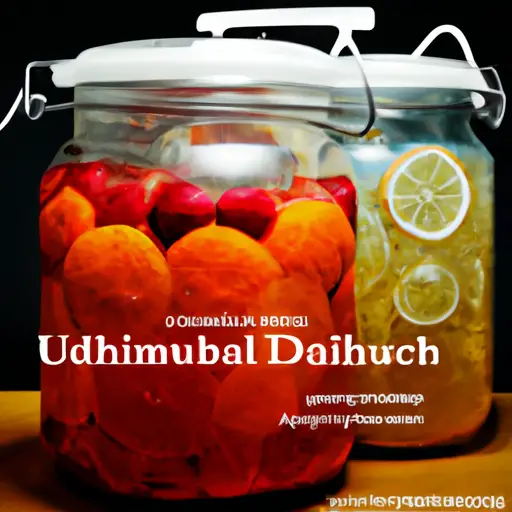So, you’re interested in off grid living, huh? That’s awesome! There’s just something freeing about being self-sufficient and not relying on modern conveniences like electricity and refrigeration. But let me ask you this: how do you plan on preserving your fruits and vegetables without a fridge? It may seem like a daunting task, but don’t worry, there are actually quite a few methods you can use to keep your produce fresh and tasty for longer periods of time. In fact, you’ll be surprised at just how simple and effective these methods can be. In this article, we’ll delve into the world of food preservation techniques that don’t rely on refrigeration. Trust me, you’ll learn some amazing tips and tricks that will come in handy on your off grid adventure. Preserving fruits and vegetables without refrigeration is a common challenge for those living off the grid or in areas without reliable access to electricity. However, there are several methods that you can use to ensure that your produce lasts longer and stays fresh. In this article, we will explore the different methods of preserving fruits and vegetables without refrigeration, as well as provide you with some tips and techniques to ensure success.

Canning
One of the most popular methods of preserving fruits and vegetables is canning. This process involves sealing the produce in airtight jars or containers to prevent the growth of bacteria and other microorganisms. There are two primary methods of canning: pressure canning and water bath canning.
Pressure Canning
Pressure canning is used for low-acid foods, such as vegetables, meats, and soups. The process involves using a pressure canner to heat the jars to a temperature that is sufficient to kill any bacteria or other microorganisms. This method is essential for ensuring the safety of low-acid foods.
Water Bath Canning
Water bath canning is suitable for high-acid foods, such as fruits, jams, and jellies. This method involves placing the jars in a large pot of boiling water and heating them for a specific amount of time. The high temperature kills any bacteria or other microorganisms, ensuring the safety of the food.
Equipment Needed
To can fruits and vegetables, you will need some essential equipment. This includes canning jars, lids, and rings, a pressure canner (for pressure canning), a water bath canner (for water bath canning), and a canning toolkit, which includes a jar lifter, a canning funnel, and a bubble remover.
Drying
Another popular method of preserving fruits and vegetables without refrigeration is drying. This process involves removing the moisture from the produce, thereby preventing the growth of bacteria and other microorganisms. There are several techniques for drying fruits and vegetables, including sun drying, oven drying, and dehydrator drying.
Sun drying
Sun drying is the oldest method of preserving produce without refrigeration. It involves placing the fruits or vegetables on racks or screens and exposing them to direct sunlight for several days. The heat from the sun evaporates the moisture, leaving the produce dried and preserved.
Oven drying
Oven drying is a more modern alternative to sun drying. It involves placing the fruits or vegetables on baking sheets and drying them in the oven at a low temperature for several hours. This method is ideal if you don’t have access to direct sunlight or if the weather conditions are not suitable for sun drying.
Dehydrator drying
Dehydrator drying is perhaps the most convenient method of drying fruits and vegetables. It involves using a food dehydrator to slowly remove the moisture from the produce. Dehydrators are specifically designed for this purpose and allow you to set the temperature and time, ensuring optimal drying conditions.
Storage Tips
Once your fruits and vegetables are dried, proper storage is essential to maintain their quality. It is advisable to store them in airtight containers, such as glass jars or plastic bags, to prevent moisture absorption and keep them safe from pests. Additionally, storing them in a cool, dark place will help prolong their shelf life.
Pickling
Pickling is a method of preserving fruits and vegetables that involves soaking them in a brine solution or vinegar mixture. The acidity in the brine or vinegar prevents the growth of bacteria, making pickling an effective preservation method.
Brine Pickling
Brine pickling involves soaking the produce in a saltwater solution called a brine. The brine typically consists of water, salt, and spices or herbs for flavor. The produce is left to soak in the brine for several days or weeks, depending on the desired taste and texture.
Vinegar Pickling
Vinegar pickling involves soaking the produce in a mixture of vinegar, water, salt, and sugar. The acidity in the vinegar prevents the growth of bacteria and adds a tangy flavor to the fruits or vegetables. Vinegar pickling is commonly used for cucumbers, onions, and peppers.
Quick Pickling
Quick pickling is a shorter version of traditional pickling, where the produce is soaked in a vinegar mixture for a shorter period, usually a few hours to a few days. Quick pickles can be ready to eat in just a few hours, making them a convenient and delicious option.

Fermenting
Fermenting is an ancient preservation technique that involves encouraging the growth of beneficial bacteria and yeasts, which convert the sugars in the fruits and vegetables into acids and carbon dioxide. This process creates an environment that is inhospitable to harmful bacteria, allowing the produce to be preserved for extended periods.
Fermentation Process
The fermentation process begins by combining the fruits or vegetables with salt and any desired spices or herbs. The mixture is then left to ferment at room temperature for several days or weeks, depending on the desired taste and texture. The end result is a tangy and flavorful product.
Fermented Fruit and Vegetable Recipes
There are numerous recipes for fermented fruits and vegetables, ranging from sauerkraut and kimchi to fermented fruits and pickles. These recipes often involve variations in ingredients and fermentation times, allowing for a wide array of flavors and textures.
Benefits of Fermentation
In addition to preserving the fruits and vegetables, fermentation provides several health benefits. The process increases the availability of nutrients, enhances digestion, and promotes a healthy gut microbiome. Fermented foods also have a unique flavor profile that adds depth and complexity to dishes.
Choosing the Right Fruits and Vegetables for Preservation
When it comes to preserving fruits and vegetables without refrigeration, it is essential to choose the right produce. Some factors to consider include the acidity level, ripeness, and overall quality of the fruits and vegetables.
High Acid vs. Low Acid Foods
High-acid foods, such as citrus fruits, tomatoes, and pineapple, naturally have a lower pH level, making them less prone to spoilage. These foods can be safely preserved using various methods, including canning and pickling. On the other hand, low acid foods, such as green beans, carrots, and potatoes, require pressure canning to ensure their safety.
Ripeness
When selecting produce for preservation, it is best to choose fruits and vegetables that are perfectly ripe. Underripe or overripe produce may not preserve well and can affect the quality and flavor of the preserved product.
Quality
The quality of the fruits and vegetables is another crucial consideration. It is important to select produce that is free from bruising, rotting, or other signs of decay. High-quality produce will result in better-preserved products with optimal taste and texture.
Proper Preparation Techniques
Proper preparation techniques are key to successful preservation. Following these steps will help ensure that your fruits and vegetables are safe and well-preserved.
Washing
Thoroughly washing the produce is the first step in preparation. This helps remove any dirt, pesticides, or other contaminants that may be present.
Cutting and Slicing
Depending on the preservation method you choose, you may need to cut or slice the fruits and vegetables. It is essential to follow the instructions for each specific method to ensure proper sizing and consistency.
Blanching
Blanching is a process that involves briefly immersing the produce in boiling water and then immediately transferring it to an ice bath. This step helps preserve the fruit or vegetable’s color, texture, and nutritional value.
Packing
Properly packing the fruits and vegetables into jars or containers is crucial to ensure their preservation. It is important to leave the recommended headspace, as specified in the preservation method you choose, to allow for expansion during the process.
Storage and Shelf Life
Once your fruits and vegetables are preserved, proper storage conditions will help prolong their shelf life and maintain their quality.
Appropriate Containers
Choosing appropriate containers, such as glass jars with tight-fitting lids or airtight plastic bags, is essential. Ensure that the containers are clean and free from cracks or damage that could compromise the storage.
Labeling
Labeling your preserved produce with the type of fruit or vegetable, the date of preservation, and any additional notes or ingredients will help you keep track of your inventory and ensure that you use the oldest preserved products first.
Dark and Cool Storage Space
To maximize shelf life, it is best to store your preserved fruits and vegetables in a dark and cool space. This can be a pantry, basement, or root cellar, where the temperature and humidity levels are stable.
Common Problems and Troubleshooting
Preserving fruits and vegetables without refrigeration can sometimes present challenges. Here are some common problems that you may encounter and how to troubleshoot them.
Spoilage
If you notice any signs of spoilage, such as a foul odor, mold growth, or a slimy texture, it is best to discard the preserved product. Spoilage can occur due to improper preparation, insufficient processing time, or contamination during the preservation process.
Mold Growth
Mold growth can be prevented by ensuring that the produce is properly washed and sanitized before preservation. Additionally, sealing the jars or containers tightly and storing them in a cool and dark space will help minimize the risk of mold growth.
Texture and Flavor Changes
Over time, the texture and flavor of preserved fruits and vegetables may change. This is a natural occurrence and can be expected in long-term preservation methods. However, if the changes are extreme or the product becomes inedible, it is best to discard it.
Preventing Spoilage
To prevent spoilage, it is essential to follow proper preparation and preservation techniques. Double-checking the guidelines for each method and ensuring that you have the necessary equipment and ingredients will help minimize the risk of spoilage.
Conclusion
Preserving fruits and vegetables without refrigeration is not only possible but also beneficial for those living off the grid or in areas with limited access to electricity. By utilizing methods such as canning, drying, pickling, and fermenting, you can extend the shelf life of your produce and enjoy fresh flavors throughout the year. Choosing the right fruits and vegetables, properly preparing them, and storing them in appropriate conditions will ensure successful preservation. So, don’t let a lack of refrigeration limit your ability to enjoy the bounty of fresh produce. Embrace these methods of preservation and embark on a journey of self-sufficiency and sustainable living.




